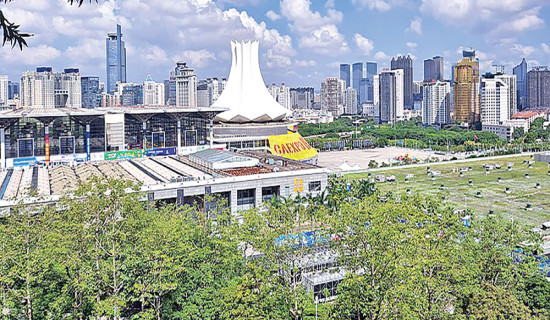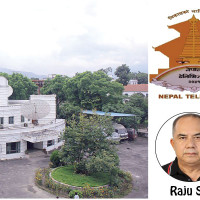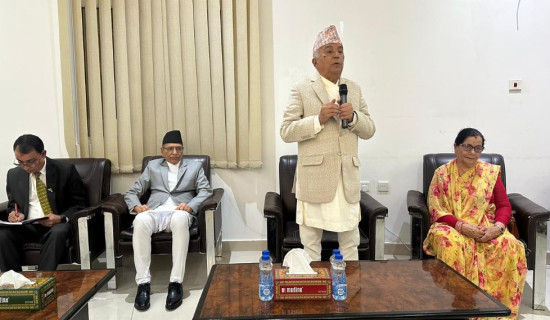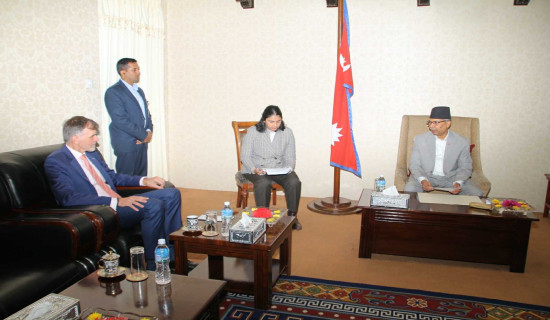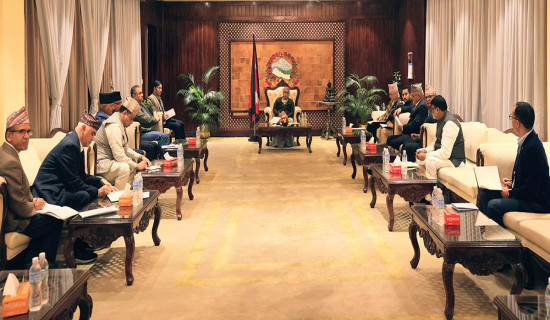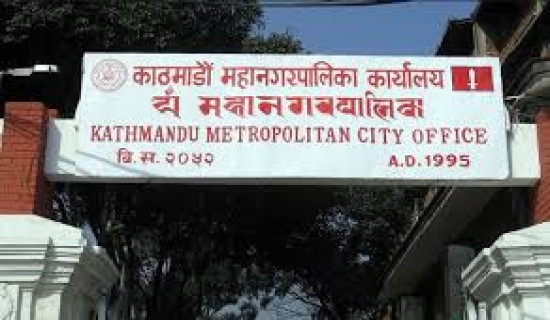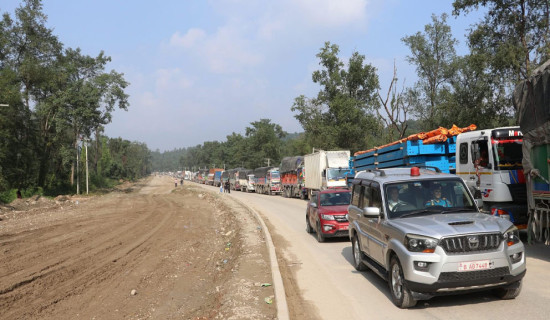- Tuesday, 4 November 2025
Retain Youth For Agricultural Development
The revitalization of Nepal's agricultural sector hinges on its capacity to retain the youth demographic, particularly those aged 21 to 35 years. A significant number of these individuals choose to pursue education abroad or seek employment as migrant labourers, resulting in a substantial brain drain. It is imperative to harness this pool of human resources within the country to drive the broader development of agro-based activities. In a scenario where a considerable portion of Nepal's dynamic youth has migrated abroad, the government must take proactive measures to encourage their return and provide viable employment opportunities.
The current state of Nepal's agricultural sector appears to be less prosperous than during the Panchayat era. Nepal has yet to fully embrace modern farming methods, leaving many impoverished farmers reliant on age-old agricultural practices. Additionally, the fragmentation of agricultural land poses a significant obstacle to the sector's growth. While over 70 per cent of our population is engaged in agriculture, developed countries typically have only 5 per cent or less involved in this sector. To foster agricultural development, the adoption of modern technologies and improved access to irrigation are fundamental requirements.
Given the shortage of agricultural labour, the government must formulate a practical action plan to address the agricultural workforce crisis. Many rural households are on the verge of facing severe economic challenges, with limited resources for both sustenance and food. This predicament arises from the fact that over 75 per cent of the youth, hailing from both hilly and plain regions across the country, have migrated abroad for employment opportunities. Our agricultural system remains rooted in tradition, and the transition to mass agricultural production through modern technology has been slow to materialize. While the government declares the agenda of poverty reduction through the promotion of new technology and opportunities to reduce agricultural products from abroad, youths from every part of nation still prefer working abroad. Hence, poverty reduction in Nepal through agricultural production has been a distant dream. So long as we fail to retain our agricultural workers in our own country, the much-hyped agenda of poverty alleviation through massive agricultural production will be a farce. Among different varieties of food grains, rice is a major contributing factor to the country's GDP, with 20 per cent out of 27.5 per cent of the total contribution to this sector. Among foods from different crops in Nepal, rice ranks number one. The annual production of edible crops, including rice, maize, wheat, etc., comprises over 10 million metric tonnes, but the ratio of rice is more than 75 per cent. In bygone days, Nepal used to export rice to other countries, but now the time has changed due to a shortage of manpower to plant food grains, including paddy. That is why we are forced to export such food materials.
The need to reform the current education system and modernise the age-old agricultural system, which will help generate awareness of the agricultural sector, is urgent. In the long run, it will create job opportunities and bring down the rate of poverty. At a time when the majority of youths across the country tend to flee the country to seek foreign jobs for better earnings, the implementation of a minimum wage in every sector must be applied. Besides, the relationship between workers and employers must be harmonious to boost the productivity of the agricultural sector. Moreover, the agony being faced by farmers' access to the market is another problem that the agricultural sector is facing today. Exploration of labour and employment for strengthening agricultural worker-employer relationships and attracting youths towards agricultural fields for strengthening the country's economy is a need of the hour. The irrigation facility in the country has been limited to only 25 per cent of the land throughout the year. The unskilled and low level of manpower available in agricultural fields will translate into more poverty in rural areas, where most of the people depend on seasonal income from agricultural products like maize, paddy, wheat, and others. Consequently, they are forced to seek foreign jobs to fulfil their demands for livelihoods as per the need for time. Insufficient production and low productivity of agricultural products in rural areas will aggravate the farmers' predicament. Nepal, with an area of 147181 sq. km, is a land of diverse and rugged geographical features. Besides, more factors are responsible for keeping people in the clutches of poverty. All over Nepal, the scarcity of farmland workers has made a great deal of fertile land barren. It is known to all that migration within and outside the country is a core factor in developing poverty. An overwhelmingly higher number of people do not want to migrate to another place unless and until they are forced to abandon their native place. The large differences in income between places and countries continue to motivate individuals to escape poverty through migration. Many privileged and influential persons and countries attract more and more people from low-income countries with handsome jobs to maintain their livelihoods. In the Nepali context, poverty and low agricultural output are considered two sides of the same coin.
Once the country was a significant exporter of food grains, contributing to its foreign currency earnings. However, the current scenario has reversed, and nation now imports a considerable portion of its food requirements. Despite being known as an agricultural country, with approximately 85 percent of its population engaged in agriculture, the nation faces several challenges that hinder agricultural productivity. One of the primary factors contributing to this issue is the migration of agricultural labourers. To address this problem effectively and ensure food security for its people, the government needs to implement a practical plan of action aimed at retaining its youth within the country and providing them with suitable opportunities in agriculture. The root cause of poverty in many rural areas is unemployment, as most individuals have limited job options beyond agriculture. Consequently, they often struggle to repay loans taken to sustain their livelihoods. Furthermore, many farmers are reluctant to continue with traditional farming practices, there is a lack of the necessary capital and modern technology required to enhance agricultural productivity in line with contemporary demands. It is our hope that in the future, the government will take on a pivotal role in boosting agricultural output by inspiring rural youth and providing them with essential resources such as modern agricultural equipment and fertilisers. Nepal's shift from being a food grain exporter to an importer has created significant challenges for its agricultural sector. The migration of agricultural labour, unemployment, and the need for modernization all contribute to this issue. However, with strategic government intervention and investment, there is hope for revitalising the agricultural sector and ensuring a more secure food supply for the nation.
(The author is a retired public health officer.)



